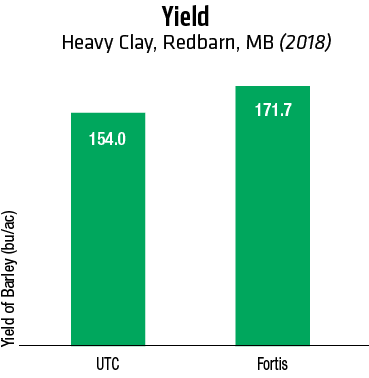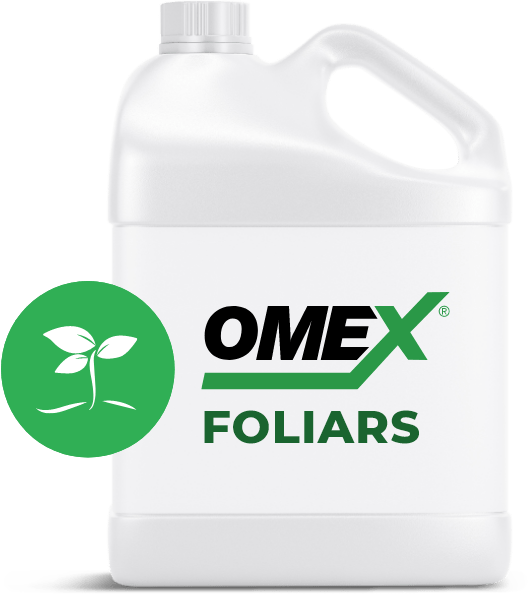
Fortis


Strengthens and Prevents Lodging
What is It?
- Fortis is a low salt index liquid fertilizer with high levels of Copper, Manganese and Zinc.
- The product is formulated with fully water soluble ingredients and OMEX’s proprietary technology that enhances uptake and translocation, while minimizing tissue damage.
- The product is available in 10L jugs, 450L and 1000L IBC’s.
When & Why Use It?
- Fortis is recommended on all cereal crops at the flag leaf stage.
- Crop lodging is caused among others (K deficiency, Mn deficiency, too much rain and wind…) by a weak straw strength.
- Yield and grain quality losses to lodging could be significant as it hampers gain fill and may lead to premature sprouting.
- Copper and Manganese are key micronutrients for the process of lignification, which allows for the thickening of the straw.
- Manganese is a trigger for the shikimate pathway and plant health.
- Zinc stimulates the use of Phosphorus and enhances metabolism.
- Boron is an important component for cell wall structure.
What to Expect?
- Fortis improves lignification and straw strength and help prevent lodging.
- Fortis corrects Copper, Manganese, Zinc and Boron deficiencies.
- Fortis improves chlorophyll production and photosynthesis.
- Given the role of Copper for pollen fertility, Fortis contributes to ergot prevention and seed quality.
Size Options

Tote

10L
Application Guidelines
- Apply Fortis at 1L /ac with a minimum of 10 US gal of water (15 US gal is preferred).
- Recommended alone. If tank-mixed with fungicides see compatibility charts. Some combination may be physically compatible but may cause bronzing effect on the leaves.
- Fortis is a Copper containing product and as such should be sprayed with a high water volume, especially if tank-mixed with fungicides that require higher rates of surfactant.
- Avoid spraying Fortis under hot and dry conditions. Spray preferably late during the day going to the evening. Bronzing from Fortis does not lead to yield losses.


Findings
2018 Heavy clay – Manitoba

2017 Heavy clay – Manitoba


